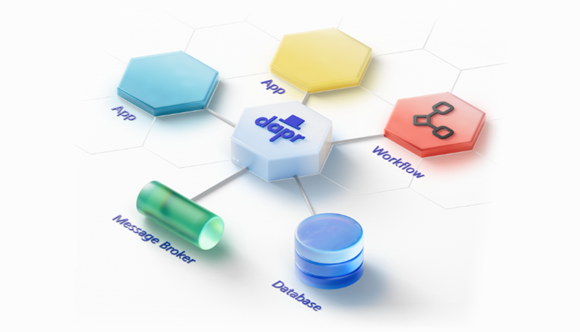Dapr goes deeper on dapper distributed applications
Dapr (distributed application runtime) is a self-hosted, open-source project that offers extra functionality to cloud-native applications through ‘building block’ APIs to simplify microservice connectivity.
Dapr is an open source Cloud Native Computing Foundation incubating project created by Diagrid founders, Mark Fussell and Yaron Schneider in 2019.
As Dapr project maintainers, Diagrid has this month announced the latest version of Dapr.
Diagrid’s mission is to boost developer productivity by building applications based on open source technologies such as Dapr and KEDA (Kubernetes Event-Driven Autoscaler is an open-source, lightweight component that can be added to any Kubernetes cluster to scale container workloads based on external events), particularly those focused on cloud-native and microservice architectures.
Other maintainer organisations to the Dapr incubating project include Microsoft, Intel and Alibaba.
There has also been an update to Conductor, a Software as a Service (SaaS) that helps manage, upgrade and monitor Dapr on Kubernetes clusters.
“The v1.14 update provides many new capabilities for developers building distributed apps,” said Yaron Schneider, co-creator of Dapr and founder and chief technology officer at Diagrid. “Especially improving the scale and performance of Dapr workflows with the new scheduler service, as well as a new API for scheduling cron-like jobs, which has been a strong community request.”
Jobs API, it’s big
The Dapr 1.14 update introduces several significant new features and improvements including a ‘Jobs API’, which enables developers to schedule and orchestrate jobs for future execution, such as batch processing, maintenance scripts, and database backups.
Streaming subscriptions enable users to make consuming subscriptions message topics much easier, streaming subscriptions do not require an HTTP endpoint in an application, making them easy to use in code. They are also dynamic, meaning they allow for adding or removing them at runtime.
Dapr today is deployed as a sidecar to applications. Also being released is a new Dapr Kubernetes deployment option called Dapr Shared that enables Dapr to run as a pod that can be scaled out or as a per-node DaemonSet, leading to reduced resource usage.
Dapr provides developers with APIs that abstract away the complexity of the most common challenges when building distributed applications. It increases developer productivity by 20-40% with features such as workflow, pub/sub, state management, secret stores, external configuration, bindings, actors, distributed lock, and cryptography. Dapr enables developers to benefit from its built-in security, reliability, and observability capabilities, so they don’t need to write boilerplate code to achieve production-ready applications.
“The simplest way to get Dapr 1.14 today is with Diagrid Conductor, which integrates all the new features and is available in a free version,” said Mark Fussell, co-founder and CEO, Diagrid.
The new Component Builder in Conductor provides a step-by-step tool that generates the Dapr configuration YAML file. With over 120 components, Dapr supports connecting applications to major cloud services, SaaS offerings, on-premise software, and more.
“Our goal with Conductor Advisor is to simplify the complexities of developing and operating distributed applications” said Fussell. “By automating best practices, we enable developers to focus on innovation while ensuring their applications are secure and reliable.”
Dapr components simplify interactions with underlying infrastructure, offering developers an easy interface to integrate various services into their applications.




